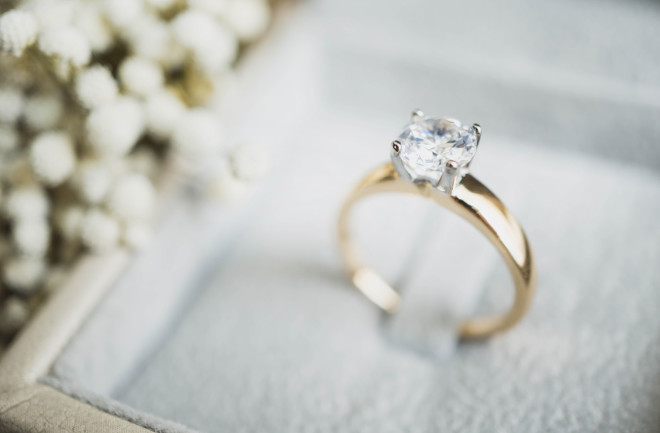Marking an engagement or the big wedding day itself with a ring is part and parcel of many cultures today. But you may be surprised to learn that wearing the ring on the fourth finger of the left hand is a tradition dating back at least a thousand years.
It’s a practice that’s thought to stem from the belief that a vein ran from this finger all the way to the heart — the vena amoris. This idea is often attributed to the ancient Egyptians, Greeks, and Romans, but the origins of the ring itself are obscure.
Read More: Humans and Neanderthals May Have Shared Jewelry Designs
History of Wedding Rings
It’s often said that wedding rings (or at least those connected to marriage) started with the ancient Egyptians. Archaeologists have uncovered golden rings that could indicate such uses.
Yet, prior to the reign of the Ptolemies, there was no formal marriage ceremony in ancient Egypt. Marriage contracts were practiced but the arrangement remained primarily between households.
From Egypt, the use of rings is believed to have spread to the Greeks and the Etruscans, and thus to ancient Rome. Though the ancient Greeks exchanged rings as symbols of love, not of marriage.
Read More: Why Are We Addicted to Love?
When Did Engagement Rings Start?
When it comes to the origins of the use of rings for engagements, all roads lead to Rome — or at least, so it would seem. Roman rings bearing clasped hands are usually understood as engagement rings, explains Karen Klaiber Hersch, a professor of Greek and Roman classics at Temple University.
This clasped-hands symbol is a shared emblem between Greeks and Romans, lending some credence to the fact that there was interexchange between these peoples.
In general, rings were incredibly important to ancient cultures, says Klaiber Hersch, also the author of "The Roman Wedding: Ritual and Meaning in Antiquity." They indicated wealth and status, were worn by those in specific political roles, and were imbued with symbolic and religious significance.
Roman Engagements
Other evidence underlines the use of rings in Roman engagements: Pliny the Elder, for example, noted that in his day “an iron ring is sent by way of a present to a woman when betrothed, and that, too, without any stone in it.”
“There's enough evidence to say that rings were given as a sign of a promise,” Klaiber Hersch says. The ring would be offered at an event known as the sponsalia, an informal arrangement to marry, normally between the groom and the father of the bride.
These engagement rings — known as annuli pronubi — may have changed over time, from the simple iron rings described by Pliny to those made of silver and gold. By around the third century AD, it was seemingly common practice (at least among elites) to mark engagements with these more valuable materials.
Wedding Rings
Though Roman wedding rings remain elusive and were likely not used, the practice of offering them to mark engagements may have inspired their use during wedding ceremonies by the Christian church. By Medieval times, they had become a symbol of love and a permanent union.
Placing a ring on someone’s finger with the intent to marry is thus steeped in history. Of course, not every part of the tradition is ancient: The modern, diamond-encrusted engagement band is figured as the result of crafty marketing dating to only the mid-20th century.
Read More: Alternatives to the Diamond Engagement Ring

